Resources
About Us
Neurogenomics Market Size, Share, Forecast, & Trends Analysis by Offering (NGS [Kits {Library Prep, QC, DNA Extraction}, Systems], PCR, Microarrays {Protein, DNA, RNA, Tissue}, Software) Application (Research, Clinical) End User - Global Forecast to 2031
Report ID: MRHC - 1041336 Pages: 250 Oct-2024 Formats*: PDF Category: Healthcare Delivery: 2 to 4 Hours Download Free Sample ReportThe growth of the neurogenomics market is driven by several factors, including decreasing sequencing costs, the rising prevalence of neurological disorders, and the increasing adoption of advanced sequencing technologies for disease diagnostics and precision medicine. Additional drivers include increased pharmaceutical R&D expenditures, improvements in regulatory and reimbursement frameworks for gene sequencing, rising healthcare expenditures, and increased funding for research activities. There is also a growing emphasis on early detection and prevention of neurological disorders, along with technological advancements in neurogenomics products and government initiatives that promote the use of sequencing in both clinical and research applications.
However, the high prices of neurogenomics products, the low chances of identifying positive, actionable mutations for precision medicine, and ethical & legal issues related to sequencing-based diagnosis are factors restraining the growth of this market.
Additionally, the increasing adoption of targeted therapies, emerging economies, and rising awareness regarding neurological disorders are expected to generate growth opportunities for market stakeholders. However, the dynamic regulatory landscape, the limited expertise & sequencing capabilities of small & medium-sized laboratories, the shortage of sequencing professionals, and the high capital investments required for sequencing setups are major challenges impacting the growth of the neurogenomics market.
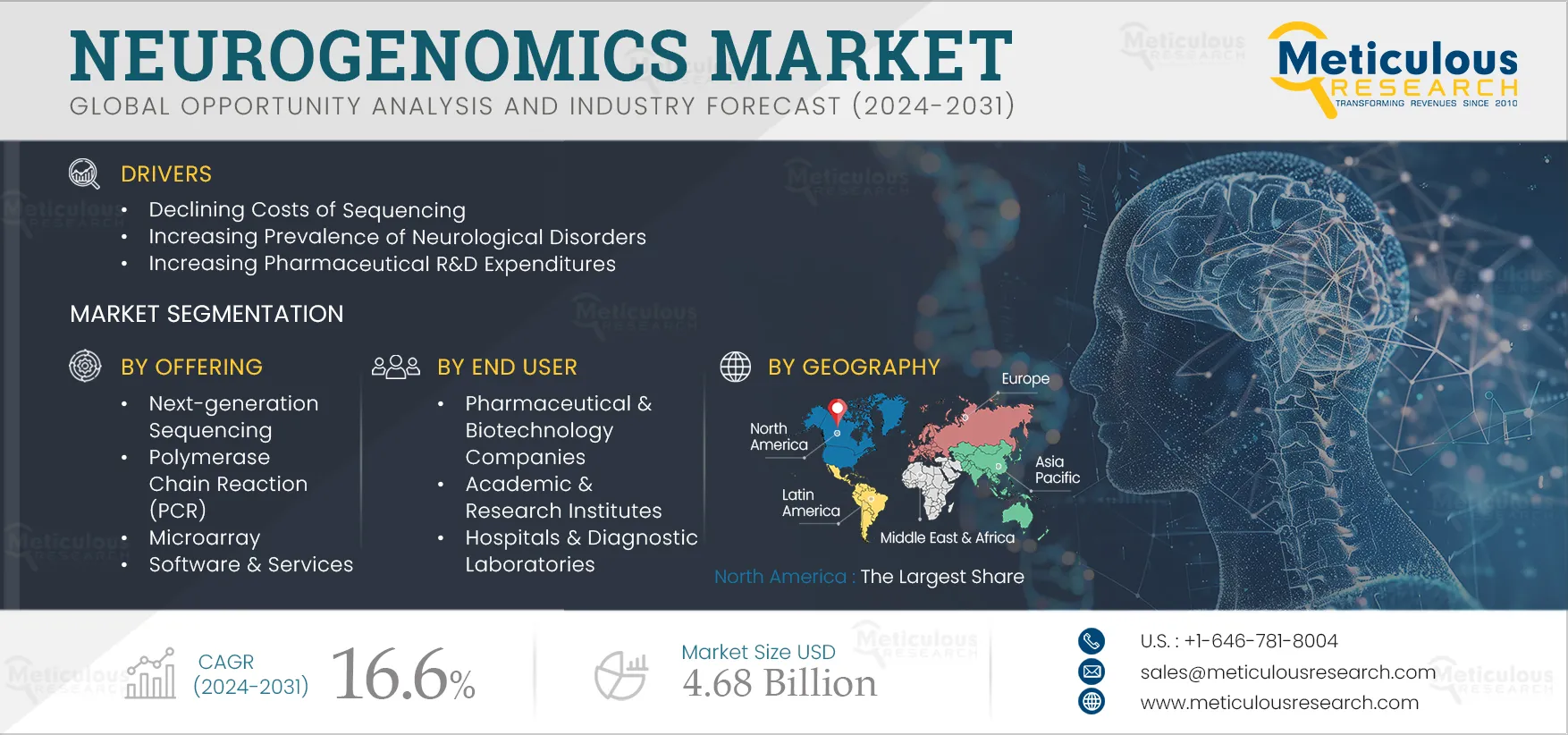
Click here to: Get a Free Sample Copy of this report
Precision medicine is an innovative approach to patient care that tailors treatment methods based on an individual's genetic makeup while also accounting for genetic changes related to disease and lifestyle factors. This emerging strategy for disease treatment and prevention recognizes the variability in genes, environments, and lifestyles among individuals. By minimizing guesswork and trial-and-error in medication selection, precision medicine helps physicians address challenges related to variable diagnostic capabilities and develop treatment strategies based on broader demographic insights.
Additionally, precision medicine offers a more comprehensive view of a patient's health. In clinical neurogenomics workflows, it enhances predictive and preventive care through targeted therapies. Key benefits of precision medicine for neurological conditions include reduced reliance on trial-and-error prescriptions, prevention of adverse drug reactions, improved patient adherence to treatment due to fewer side effects, decreased prescriptions for unnecessary medications in non-responder patients, and optimized drug development costs.
According to The Lancet Neurology’s 2021 report, neurological conditions affected 43% of the global population or approximately 3.4 billion individuals. In that year, these conditions accounted for 443 million years of healthy life lost due to disability, illness, and premature death (measured in disability-adjusted life years), making them the leading contributors to the global disease burden, surpassing cardiovascular diseases. Key contributors to neurological health loss included migraine, neonatal encephalopathy, stroke, diabetic neuropathy, Alzheimer’s disease, and other dementias.
In 2021, pediatric and neurodevelopmental conditions were expected to represent about one-fifth of the total neurological burden globally, equivalent to 80 million years of healthy life lost. Diabetic neuropathy emerged as the fastest-growing neurological condition, with cases more than tripling since 1990, reaching 206 million in 2021, largely due to the global increase in diabetes. Additionally, new conditions such as neurological complications from COVID-19—including cognitive impairment and Guillain-Barré syndrome—now account for over 23 million cases (Source: World Health Organization, March 2024 Report).
In 2021, central and western sub-Saharan Africa were the regions with the highest nervous system burden, while high-income Asia-Pacific and Australasia had the lowest burden. According to a major analysis from the Global Burden of Disease, Injuries, and Risk Factors Study (GBD) 2021, published in The Lancet Neurology journal, in 2021, 3.4 billion people suffered a nervous system condition. Thus, the rising prevalence of neurological disorders is expected to boost the demand for advanced neurological solutions, driving the growth of the neurogenomics market.
Targeted therapies are being increasingly adopted in neurogenomics studies due to several factors, including their ability to target specific cells, their efficacy and safety, and the increasing number of targeted therapies being approved by the FDA. Also, in neurogenomics, targeted therapies can restrict disease progression in the early phases. NGS has a major application in cancer diagnosis and targeted therapies based on biomarkers. The use of targeted therapies is expected to boost the demand for neurogenomics solutions, generating market growth opportunities in the long run.
The capability to sequence the genes of any organism for clinical and research purposes has transformed public health. Portable handheld sequencing devices are driving future market growth by making sequencing more affordable, user-friendly, and faster, eliminating the need for large clinical laboratory facilities. Real-time sequencing allows researchers and clinicians to access data swiftly and respond promptly. Portable nanopore-based sequencers can sequence an entire genome for under USD 1,000. These devices work by passing the DNA molecule through a nanopore—a small protein embedded in a membrane. As the DNA moves through the nanopore, it connects with an adaptor, initiating an electric current that is recorded and displayed as a graph. Consequently, the increasing adoption of portable sequencers is expected to significantly boost the neurogenomics market.
By offering, the neurogenomics market is segmented into NGS, PCR, microarray, and software & services. In 2024, the Next-generation Sequencing (NGS) segment is expected to account for the largest share of 63.9% of the neurogenomics market. This segment’s substantial market share is primarily attributed to the recurring demand for consumables, increasing sequencing-based clinical & research applications of neurogenomics, and the growing preference for sequencing-based diagnostics.
Moreover, the NGS segment is also expected to record the highest CAGR during the forecast period due to the increasing demand for NGS consumables, the higher accuracy of NGS compared to other sequencing technologies, and the increasing number of genomics projects based on sequencing.
By application, the neurogenomics market is segmented into research applications and clinical applications. The research applications segment is further segmented into functional studies, target identification, variant discovery, and transcription factor binding analysis. In 2024, the research applications segment is expected to account for the larger share of 61.6% of the neurogenomics market. This segment’s large share is attributed to the extensive use of NGS, PCR, and microarray solutions in research to identify specific genes and their sequences to gain a better understanding of the mechanisms underlying complex neurological diseases such as Parkinson's disease, Alzheimer's disease, Amyotrophic Lateral Sclerosis (ALS), and psychiatric disorders.
Moreover, the research applications segment is expected to record the higher CAGR during the forecast period due to the rising demand for advanced research solutions among laboratories to develop treatments for neurological conditions, the increasing demand for personalized medicine, and research studies to identify specific gene mutations in complex neurological diseases such as Alzheimer’s disease and Parkinson’s disease.
By end user, the neurogenomics market is segmented into pharmaceutical & biotechnology companies, hospitals & diagnostic laboratories, and academic & research institutes. In 2024, the pharmaceutical & biotechnology companies segment is expected to account for the largest share of 44.6% of the neurogenomics market. This segment’s large share is primarily attributed to pharmaceutical & biotechnology companies’ high adoption of advanced technologies for research, the high availability of capital for research, increasing research for drug discovery, and the widening applications of NGS.
However, the academic & research institutes segment is expected to record the highest CAGR during the forecast period due to the rising number of research centers, increasing private & government funding for neurogenomics research, and the increasing utilization of advanced solutions by academic & research institutes.
In 2024, North America is expected to account for the largest share of 47.2% of the neurogenomics market. The growth of this market is primarily attributed to the increasing R&D expenditures in the pharmaceutical & biotechnology sector, the presence of leading sequencing solutions providers in the region, favorable government initiatives for genomics research, growing applications of sequencing-based research, increasing prevalence of neurological disorders, and favorable reimbursement scenario in the region.
Moreover, the market in Asia-Pacific is slated to register the highest CAGR of 17.9% during the forecast period. Countries in the Asia-Pacific region, particularly China and India, are expected to provide significant growth opportunities for vendors in this market. Many nations in this area are intensifying their efforts to improve the healthcare sector, resulting in increased investments aimed at enhancing healthcare accessibility, infrastructure, and drug discovery programs. Additional key factors driving growth in the region include the rising incidence and prevalence of neurological disorders, the growing adoption of advanced diagnostic and therapeutic technologies, and supportive government initiatives for the healthcare sector.
The report offers a competitive analysis based on an extensive assessment of the leading players’ product portfolios, geographic presence, and key growth strategies adopted in the last three to four years. Some of the key players operating in the neurogenomics market are Illumina, Inc. (U.S.), Thermo Fisher Scientific Inc. (U.S.), F. Hoffmann-La Roche Ltd (Switzerland), QIAGEN N.V. (Netherlands), Agilent Technologies, Inc. (U.S.), Revvity, Inc. (U.S.), Pacific Biosciences of California Inc. (U.S.), Danaher Corporation (U.S.), Oxford Nanopore Technologies Plc. (U.K.), and MGI Tech Co., Ltd. (China).
|
Particulars |
Details |
|
Number of Pages |
~250 |
|
Format |
|
|
Forecast Period |
2024–2031 |
|
Base Year |
2023 |
|
CAGR (Value) |
16.6% |
|
Market Size (Value) |
$4.68 Billion by 2031 |
|
Segments Covered |
By Offering
By Application
By End User
|
|
Countries Covered |
North America (U.S. and Canada), Europe (Germany, France, U.K., Italy, Spain, and Rest of Europe), Asia-Pacific (China, Japan, India, and Rest of Asia-Pacific), Latin America and Middle East & Africa |
|
Key Companies Profiled |
Illumina, Inc. (U.S.), Thermo Fisher Scientific Inc. (U.S.), F. Hoffmann-La Roche Ltd (Switzerland), QIAGEN N.V. (Netherlands), Agilent Technologies, Inc. (U.S.), Revvity, Inc. (U.S.), Pacific Biosciences of California Inc. (U.S.), Danaher Corporation (U.S.), Oxford Nanopore Technologies Plc. (U.K.), and MGI Tech Co., Ltd. (China) |
The neurogenomics market study focuses on market assessment and opportunity analysis based on the sales of neurogenomics products across various market segments. The report also includes a competitive analysis based on the leading market players’ product portfolios and key growth strategies adopted in the last 3–4 years. The report also provides insights on factors impacting market growth, regulatory analysis, pricing analysis, and Porter’s five forces analysis.
The neurogenomics market is projected to reach $4.68 billion by 2031, at a CAGR of 16.6% during the forecast period.
In 2024, the next-generation sequencing (NGS) segment is expected to hold the major share of the neurogenomics market.
The research applications segment is expected to witness the fastest growth during the forecast period 2024–2031.
The growth of the neurogenomics market is driven by the declining costs of sequencing, the increasing prevalence of neurological disorders, the growing utilization of advanced sequencing technologies in disease diagnostics & precision medicine, increasing pharmaceutical R&D expenditures, improvements in regulatory & reimbursement scenarios for gene sequencing, rising healthcare expenditures, increasing funding for research activities, the growing need for the early detection & prevention of neurological disorders, technological advancements in neurogenomics products, and government initiatives promoting the use of sequencing in clinical & research applications.
Furthermore, the increasing adoption of targeted therapies, emerging economies, and rising awareness regarding neurological disorders are expected to generate growth opportunities for market stakeholders.
The key players operating in the neurogenomics market are Illumina, Inc. (U.S.), Thermo Fisher Scientific Inc. (U.S.), F. Hoffmann-La Roche Ltd (Switzerland), QIAGEN N.V. (Netherlands), Agilent Technologies, Inc. (U.S.), Revvity, Inc. (U.S.), Pacific Biosciences of California Inc. (U.S.), Danaher Corporation (U.S.), Oxford Nanopore Technologies Plc. (U.K.), and MGI Tech Co., Ltd. (China).
The countries like China and India are projected to offer significant growth opportunities for the vendors in this market. The growth of this regional market is attributed to the accelerated economic growth in many countries within the region, leading to increased government focus on improving the healthcare sector. This has resulted in high investments to enhance the accessibility of healthcare services, improve healthcare infrastructure, and support for drug discovery and genome mapping programs.
The Neurogenomics Market is expected to reach $4.68 billion by 2031, at a CAGR of 16.6% during the forecast period from 2024 to 2031. Neurogenomics is a field that intersects genome sciences and neurobiology, focusing on how the genome influences the structure, evolution, development, and function of the nervous system. This research involves genetic analysis, including the examination of genome sequencing outputs such as proteomics and transcriptomics. The aim is to identify genes involved in the functioning of the nervous system and to understand the biological mechanisms through which they contribute to brain development, plasticity, function, and related diseases.
The growth of the neurogenomics market is driven by the declining costs of sequencing, the increasing prevalence of neurological disorders, the growing utilization of advanced sequencing technologies in disease diagnostics & precision medicine, increasing pharmaceutical R&D expenditures, improvements in regulatory & reimbursement scenarios for gene sequencing, rising healthcare expenditures, increasing funding for research activities, a growing need for the early detection & prevention of neurological disorders, technological advancements in neurogenomics products, and government initiatives promoting the use of sequencing in clinical & research applications. However, the high prices of neurogenomics products, the low chances of identifying positive, actionable mutations for precision medicine, and ethical & legal issues related to sequencing-based diagnosis are factors restraining the growth of this market.
Furthermore, the increasing adoption of targeted therapies, emerging economies, and rising awareness regarding neurological disorders are expected to generate growth opportunities for market stakeholders. However, the dynamic regulatory landscape, the limited expertise & sequencing capabilities of small & medium-sized laboratories, the shortage of sequencing professionals, and the high capital investments required for sequencing setups are major challenges impacting the growth of the neurogenomics market.
The top 10 companies operating in the neurogenomics market are as follows:
Illumina, Inc. (U.S.)
Incorporated in 1998 and headquartered in California, U.S., Illumina provides sequencing and array-based solutions for genomic and genetic analysis. The company operates through two reportable segments: Core Illumina and GRAIL. The company provides a wide range of sequencing solutions for clinical and research applications.
The company supplies its products to government laboratories, genomic research institutions, academic entities, hospitals, commercial molecular diagnostic labs, and pharmaceutical and consumer genomics firms. It operates manufacturing facilities and laboratories in the U.S., Singapore, and the U.K., with a global distribution network spanning Australia, New Zealand, Germany, China, France, India, Japan, the Netherlands, and the U.K.
Some of the company’s subsidiaries operating in the neurogenomics market are Illumina GmbH (Germany), Illumina Australia Pty. Ltd. (Australia), Illumina U.K., Ltd. (U.K.), Illumina Italy S.r.l. (Italy), Illumina Netherlands B.V. (Netherlands), and Illumina K.K. Japan (Japan).
Thermo Fisher Scientific Inc. (U.S.)
Founded in 1956 and headquartered in Massachusetts, U.S., Thermo Fisher provides products and services across the pharmaceutical, biotechnology, agricultural, clinical, healthcare, government, and academic sectors. The company operates through four segments: Life Sciences Solutions, Analytical Instruments, Specialty Diagnostics, and Laboratory Products and Biopharma Services.
The Life Sciences Solutions segment provides a comprehensive array of reagents, instruments, and consumables used in biological and medical research, drug and vaccine discovery and production, and disease diagnosis. These products and services support customers across the pharmaceutical, biotechnology, agricultural, clinical, healthcare, academic, and government sectors. The segment is comprised of three primary businesses: Biosciences, Genetic Sciences, and Bioproduction.
Thermo Fisher has a global presence across North America, Europe, Asia-Pacific, Latin America, and the Middle East & Africa through its subsidiaries, R&D sites, and distribution network. As of December 2023, the company had 122,000 employees, with 61,000 based in the Americas, 20,000 in Asia-Pacific, and 41,000 in Europe and the Middle East & Africa.
Some of the company’s major subsidiaries are Thermo Fisher Germany B.V (Netherlands), Thermo Fisher Scientific Inc. (Mexico City) LLC (U.S.), Thermo Fisher Scientific Inc. Oy (Finland), Thermo Fisher Scientific Inc. FLC LLC (U.S.), and Thermo Fisher Scientific Inc. Australia Pty Ltd (Australia).
Agilent Technologies, Inc. (U.S.)
Founded in 1999 and headquartered in California, U.S., Agilent Technologies provides application-focused solutions for the life sciences, diagnostics, and applied chemicals markets. The company operates through three business segments: Life Sciences and Applied Markets, Agilent Cross Lab, and Diagnostics and Genomics. The Diagnostics and Genomics segment provides neurogenomics solutions.
The Diagnostics and Genomics segment encompasses a range of activities, including genomics, nucleic acid contract manufacturing and R&D, pathology, companion diagnostics, reagent partnerships, and biomolecular analysis. This segment is involved in six key areas, providing active pharmaceutical ingredients for oligo-based therapeutics, and offering solutions, including reagents, instruments, software, and consumables.
Agilent has a global presence, with operations in countries including Brazil, Canada, Mexico, Austria, Belgium, Finland, Germany, Ireland, Israel, Netherlands, Spain, Japan, Korea, India, and China. Through its subsidiaries and distribution network, the company serves customers in over 110 countries. Agilent also maintains R&D and manufacturing sites in the U.S. (California, Colorado, Delaware, Massachusetts, Texas, Vermont, and Washington) as well as internationally in Australia, China, Denmark, Germany, Italy, Japan, Malaysia, Singapore, and the U.K.
Some of the company’s subsidiaries are Agilent Technologies Canada Inc. (Canada), Agilent Technologies U.K. Limited (U.K.), Agilent Technologies Deutschland GmbH (Germany), Agilent Technologies Company Limited (China), Agilent Technologies Japan, Ltd (Japan), Agilent Technologies Brazil Ltda. (Brazil), and Agilent Technologies France SAS (France).
QIAGEN N.V. (Netherlands)
Founded in 1984 and headquartered in Venlo, Netherlands, QIAGEN N.V. provides sample and assay technologies for molecular diagnostics, applied testing, and academic and pharmaceutical research. The company offers its products through only one reportable segment and serves two major markets: Molecular Diagnostics and Life Sciences.
Qiagen’s product portfolio encompasses diagnostic solutions, PCR products, genomic and Next-generation Sequencing (NGS) products, consumables, and instruments. The company provides over 500 core products, including instruments, kits, and bioinformatics solutions. Additionally, Qiagen offers a diverse range of NGS services, including RNA sequencing, DNA sequencing, whole genome amplification, and RNA isolation services.
The company markets products in more than 130 countries worldwide. It has facilities in the U.S., China, Germany, Poland, the Philippines, Denmark, Romania, Spain, the U.K., and other countries. Furthermore, the company's sales are handled by distributors and subsidiaries. Some of the company's key subsidiaries are Qiagen AB (Sweden), Qiagen AG (Sweden), Qiagen GmbH (Germany), QIAGEN LLC (U.S.), QIAGEN China (Shanghai) Co. Ltd. (China), QIAGEN Inc. (Canada), QIAGEN K.K. (Japan), and QIAGEN S.r.l. (Italy).
Danaher Corporation (U.S.)
Founded in 1984 and headquartered in Washington, D.C., U.S., Danaher Corporation designs, manufactures, and markets medical, professional, industrial, and commercial products and services for various end users. Danaher Corporation is comprised of more than 15 companies and operates through four reportable business segments: Life Sciences, Biotechnology, Diagnostics, and Environmental and Applied Solutions.
The company provides neurogenomics solutions through its Life Sciences segment. It operates through research and development, manufacturing, sales, distribution, service, and administrative facilities in over 60 countries worldwide. Danaher Corporation markets its products through both direct sales personnel and independent distributors.
Some of Danaher Corporation’s subsidiaries offering neurogenomics solutions are Beckman Coulter, Inc. (U.S.) and Integrated DNA Technologies, Inc. (U.S.). Some of its other subsidiaries are Beckman Coulter Biomedical Ltd. (Ireland), Beckman Coulter Commercial Enterprise Co., Ltd. (China), Beckman Coulter France S.A.S. (France), Beckman Coulter GmbH (Germany), Beckman Coulter United Kingdom (U.K.), Beckman Coulter India Pvt Ltd (India), Beckman Coulter Australia Pty. Ltd. (Australia), and Beckman Coulter Korea Ltd. (South Korea).
F. Hoffmann-La Roche Ltd (Switzerland)
Founded in 1896 and headquartered in Basel, Switzerland, Roche is a healthcare company that develops, manufactures, and markets a wide range of healthcare solutions. The company operates through two reportable divisions: Pharmaceuticals and Diagnostics, of which the Diagnostics division operates in the neurogenomics market.
The Diagnostics division offers a broad portfolio of diagnostic products and solutions, including in vitro diagnostics, molecular diagnostics, clinical chemistry and immunoassays, point-of-care testing, tissue diagnostics, patient self-testing, next-generation sequencing, laboratory automation, and IT and decision-support solutions. The company has approximately 7,664 employees in China.
Roche has a geographic presence across the U.S., Germany, Switzerland, Japan, China, India, New Zealand, Australia, Latin America, and Africa. Furthermore, the company has 23 manufacturing sites and 29 research and development sites worldwide. Some of its subsidiaries are Roche Diagnostics (U.S.), Roche Diagnostics GmbH (Germany), Roche Diagnostics France SAS (France), Roche Diagnostics S.p.A. (Italy), Roche Diagnostics International AG (Switzerland), Roche Diagnostics Limited (U.K.), Roche Diagnostics (Shanghai) Ltd. (China), and Roche Diagnostics K.K (Japan).
Revvity, Inc. (U.S.)
Founded in 2023 and headquartered in Massachusetts, U.S., Revvity offers products, solutions, and services for the life sciences and diagnostics markets. It operates through two reportable business segments: Life Sciences and Diagnostics. In August 2022, the company completed the divestiture of its Applied, Food, and Enterprise Services businesses, transferring these operations to private equity firm New Mountain Capital from PerkinElmer, Inc. (U.S.).
The company has a network of sales and marketing channels and service personnel in over 40 countries and sells its products and services in over 160 countries.
Some of the company’s subsidiaries are Revvity Global Diagnostics, Inc. (U.S), Revvity Biomed (Shanghai) Co., Ltd., Revvity SAS (France), Revvity Germany Diagnostics GmbH (Germany), Revvity Healthcare (India) Pvt Ltd., Revvity Japan Co. Ltd., Revvity Korea, Ltd., and Nexcelom Bioscience Ltd. (U.K.).
Pacific Biosciences of California, Inc. (U.S.)
Incorporated in 2004 and headquartered in California, U.S., Pacific Biosciences of California Inc. specializes in designing, developing, and manufacturing advanced sequencing solutions aimed at addressing genetically complex challenges. The company focuses on two core technologies: HiFi long-read sequencing and short-read Sequencing By Binding (SBB). Pacific Biosciences' products are utilized across a range of applications, including plant and animal sciences, human germline sequencing, oncology, infectious diseases, microbiology, and other emerging fields.
The company operates through a single business segment. It provides its products to various end users, such as government and academic research institutions, service laboratories, genome centers, hospitals, clinical research institutions, public health laboratories, Contract Research Organizations (CROs), and agricultural and pharmaceutical companies.
The company has a direct presence across the U.K., China, Japan, South Korea, Singapore, Asia-Pacific, and the Middle East & Africa.
MGI Tech Co., Ltd. (China)
Founded in 2016 and headquartered in Shenzhen, China, MGI, originally founded as a subsidiary of BGI Group and spun off in September 2022, manufactures solutions for clinical high-throughput gene sequencing and multi-omics platforms, including genetic sequencing, medical imaging, and laboratory automation. The company provides instruments and technologies for industries such as agriculture, precision medicine, and healthcare. MGI primarily focuses on the R&D, production, and global sales of DNA sequencing instruments, reagents, and related products.
As of December 2022, MGI operated in over 90 countries, serving more than 2,000 customers. The company has branches in several countries, including the U.S., Japan, Hong Kong, China, the UAE, and Latvia. MGI has established scientific research and production bases, global training centers, and service networks across multiple regions worldwide. Its subsidiaries include MGI Ceradrop (France), MGI Köra-Packmat (Germany), and Complete Genomics (U.S.).
Oxford Nanopore Technologies Plc. (U.K.)
Founded in 2005 and headquartered in England, U.K., Oxford Nanopore Technologies Plc. manufactures devices that sequence DNA/RNA directly. The company's principal activities comprise researching, developing, manufacturing, and commercializing nanopore-based sequencing platforms that allow real-time analysis of DNA or RNA.
Oxford Nanopore provides solutions that support scientific and biomedical research across a range of application areas, including environmental analysis, cancer research, human genetics, pathogen and antimicrobial resistance studies, viral outbreak surveillance, microbiome analysis, and crop science.
The company operates through two business segments: Life Science Research Tools (LSRT) and Covid Testing. The Life Science Research Tools business segment offers next-generation sequencing products to universities, commercial laboratories, and industrial/government research laboratories and provides sequencing for scientists. The company operates in over 120 countries.
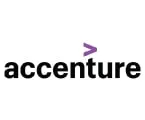

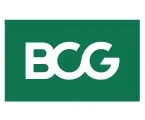
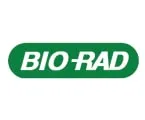


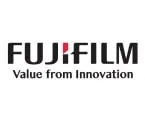
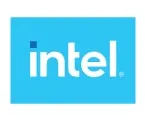
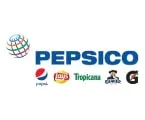
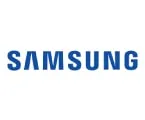
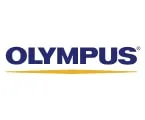

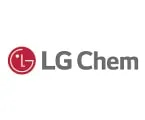
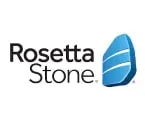
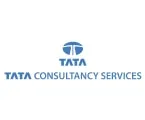
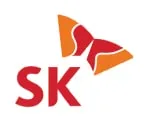
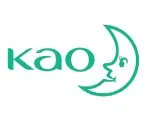
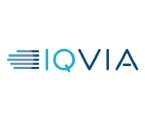
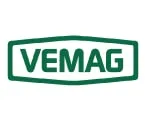
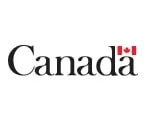

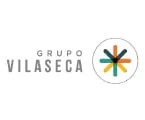
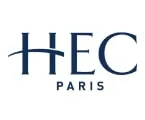

Published Date: Oct-2024
Please enter your corporate email id here to view sample report.
Subscribe to get the latest industry updates